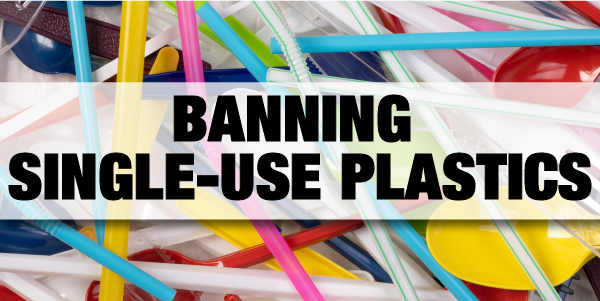After a few recent inquiries regarding reliability of information on MSDS (material safety data sheets), I began to reflect on the various ways that MSDS are used and abused. Having been around during the introduction of standardized MSDS in Canada and still being here (!) for their next incarnation as “SDS” (safety data sheets – the GHS version expected under “WHMIS 2.0” and currently defined in US “Hazcom 2012”). It seemed like an appropriate time to consider if we’re likely to avoid some of the confusion that’s been around since the late 80’s.
One of the key points to remember about MSDS-SDS is that, although they may be used for other purposes their primary function in North America has been to provide health and safety information to workers in occupational settings. This is continuing, so far, in the GHS age – the authorities prescribing the content and use of SDS are those responsible for Occupational Health and Safety (i.e. US-OSHA, Health Canada, provincial Ministries of Labour, etc.). Information on other regulatory aspects- environmental, transportation classification, etc. – while provided for, is not mandatory unless these other agencies incorporate MSDS-SDS requirements into their regulations.
Consequently it is risky to unconditionally rely upon the information presented in DG/Hazmat or regulatory (e.g. TSCA/NPRI/DSL, etc.) sections which may be country-specific or out-of-date since the OHS regulations do not consider this information mandatory.
A Common Issue
A common issue (see also, for example, the “From the Porch Swing” editorial in the December 2013 “Hazardous Cargo Bulletin”) is that suppliers may only include domestic and/or mode-specific information on DG/Hazmat classifications. A Canadian supplier might indicate a product with a closed cup flash point of 65 degrees C. is “not regulated” because they commonly ship by ground within Canada – where it isn’t regulated according to TDGR (transportation of dangerous goods regulations) section 2.18. However, someone shipping the material in the US would be responsible for classifying it as NA1993.
Similarly, the requirement to provide documented emergency response information under 49CFR 172.602(b) (3) (ii) would not be met if the MSDS-SDS only indicated the Canadian TDG information.
Conversely a material that’s indicated as “not regulated”, on a US SDS that only shows HMR (Hazardous Materials Regulations, DOT) classification, by virtue of exception 49CFR 173.154(d) – corrosive to metals only, could be non-compliant if a Canadian shipper assumed reciprocity since “exceptions” are excluded from reciprocity under TDGR section 9.1(2)(d).
Another area of “abuse” is reliance on composition information for purposes outside of the context of worker health. Many MSDS-SDS will have a disclaimer to the effect that the concentrations are not to be taken as “specifications” – but this isn’t universal. Even when these statements appear, the data is often taken as “best available” which can lead to unexpected consequences. An example of this in Ontario is illustrated by the recent introduction of toxic substances reduction legislation, combined with the current Health Canada provision for reporting ranges for ingredient composition on MSDS (the latter may be subject to change when the final “WHMIS 2.0” regulations on SDS content are issued).
Unlike in US Hazcom regulations, there is no provision in WHMIS regulations for unilateral declarations of “proprietary” information regarding ingredient identities and/or concentrations. An administrative work-around to reduce the burden of applying for permission to mask confidential information has been the use of ranges of percentages as specified in the CPR (Controlled Products or “WHMIS” Regulations) section 11.(3) and (4).
Although this has long been an accepted practice, the intent of this provision, based on the wording in 11.(2), appears to have originally been intended to apply to truly variable formulations. It would appear to be a considerable stretch to justify using the section 11.(3) ranges as necessary for typical production processes for addition of ingredients with fairly narrow composition specifications.
A recent practical example derives from the aforementioned Ontario Toxic Substances Reduction Act.
During information and licensing sessions attended by this writer, participants were advised to consider using MSDS compositions as a source of information to determine opportunities to reduce the use of certain substances. The recommendation was to consistently use the median concentration of an ingredient of interest and compare it with materials from alternate suppliers to see if a reduction was possible by substituting a different but equivalent product. Fine in theory – if all suppliers used the same convention in selecting ranges of concentration to report.
However it is conceivable (in my experience in industry) that for various reasons, as an example, Supplier A could choose to report the range of “1-5%” for a “toxic” ingredient “X” in a product actually formulated to contain 4.5%; whereas Supplier B might choose to use a range of “3-7%” in a similarly-performing product having an actual concentration of 3.5% of ingredient “X”.
A downstream user applying the consistent median approach, could assume a reduction from 5% to 3% (i.e. a 40% reduction in the ‘toxic’) in switching from Supplier B to Supplier A. This would be a “feel good” approach- but unfortunately the user would be increasing the usage of ingredient X by 29%!
Other problems are also possible when certain classes of products are exempted from the MSDS-SDS requirement (usually because of the existence of other regulations – e.g. pesticides). Some companies may, as a “stewardship” approach, produce MSDS-SDS for these types of products- but they may not always conform to the detailed requirements necessary for WHMIS-Hazcom regulations.
We’ll see if the formalized approach under the current Hazcom 2012 and anticipated “WHMIS 2.0” reduce some of these and other issues. I’m reminded of a comment from a colleague’s comment a few years after WHMIS implementation in Canada: “The best thing to happen to chemical H&S in Canada in the last 5 years was WHMIS-and the worst thing to happen was … WHMIS!”. With foresight on the part of regulators and attention to detail by users, improvements to our communication of hazards will enhance the responsible use of the chemicals on which we all depend.






 ICC USA
ICC USA ICC Canada
ICC Canada